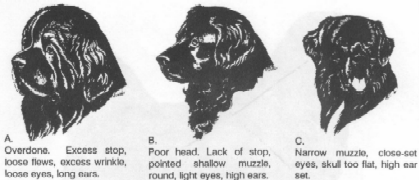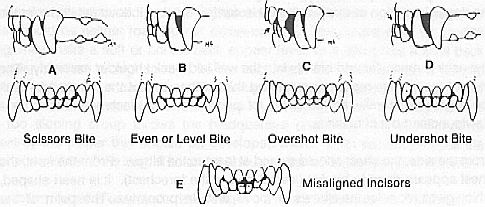HEAD FAULTS AND BITE

When seen from the front or back, the ears of a Newfoundland should blend with the head. Ears set too high or too low, ears that stand away from the head, or long, Spaniel-like ears are incorrect.When alert, a Newf raises and brings his ears forward, but with the forward edges still hugging the face. However, in repose or submission, and often in greeting, ears are held back and lowered. Ear leather is ideally heavy, rather than thin or fine.The muzzle should be in balance with the head of the individual animal, never excessively long, pointed, or snipey. The top of the muzzle is rounded. The Standard calls for a deep and squarish muzzle. Depth of muzzle comes from skeletal structure and a strong underjaw.
Level and scissors bites are equally acceptable. There is no suggestion in the Standard that an incorrect bite is more serious than any other fault. However, a wry mouth or a severely overshot or undershot bite contribute to lack of soundness and should be penalized as such. Dropped lower incisors are found in many specimens of the breed and should be considered only a minor deviation

| BACK | CONTENTS | NEXT |